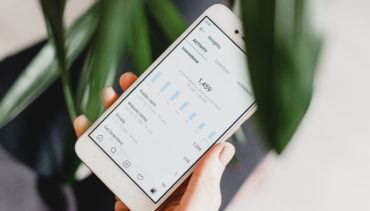
Lever Brothers’ founder, Lord Leverhulme, famously said, “I know half my advertising isn’t working, I just don’t know which half.”
Today, thanks to the change to digital sales and support channels and the sophisticated analytics that this brings, we know far more than ever before about our customers, their markets and their competitors.
With the wealth of data available, it’s surprising how many companies are not making use of it to change the focus on their products or services from ‘price’ to ‘value’ – that is, the real value of the product or service to the customer.
For years, the price has often been arrived at through a calculation of cost plus a mark up based on a perception of what the market will bear. This cost-plus pricing is frequently flawed – for example it ignores the competition and either the price is too high which has a detrimental affect on sales, or it is too low which wastes potential profits.
It is quality service that creates customer loyalty, not low prices. Within broad limits, price is not usually the main factor in customer purchase decisions. Now that companies have access to more data, they can develop a better understanding of their customers and the factors that go into making their buying decisions. This can help companies to create value pricing models which are based on what customers are actually prepared to pay for particular products or services.
The easiest way to determine price based on value is by examining the way your customers use your product or service: Do they see it as unique? Does it lower their costs? Does it make them more efficient? A good way to understand value based pricing is to think of selling a house where a number of factors – local schools, how quickly the buyer wants to move, etc. – affect the buyer’s willingness to pay a higher price.
To follow this approach, companies also need to conduct an analysis of competing goods or services in order to know the other options that are available to their customers. Exploring the competition helps to understand the advantages of your product or service (which should be the focus of the marketing) and the disadvantages (which can point the way for alterations and improvements).
Of course, the needs and wants of customers change over time. This means that marketers cannot stop customer research and may have to adjust their prices accordingly.
To make the change from price to value you need to understand the product and service characteristics that are most important to your customers and segment them accordingly. This moves away from the more traditional methods of segmentation by demographics and can reflect the way customers use your product/service. You don’t necessarily need to be the cheapest on the market as long as you are better at meeting the diverse needs of your customers.
A recent survey of more than 250 B2B firms across the world suggests that the move from price to value is already happening. Market research group, B2B International conducted a survey of senior marketers found that an increasing number – 58% compared with 39% in last year’s study – are focused on the value their products and services offer to customers.
This increased focus on value reflects the difficulty of keeping hold of B2B customers. Over half (54%) of respondents said that customer retention is one of their top five challenges, up from 44% last year, whilst building market share is the biggest challenge according to 62% of those surveyed. Even though it is almost always easier and cheaper to retain customers than to find new ones, only 14% of B2B marketers say that the customer experience is ‘ingrained in the fabric’ of their company.
Nearly everyone in business talks about becoming more customer focussed and value-based pricing is a real means of demonstrating that commitment. It lets you talk to customers about the attributes that they value most and will increase both customer satisfaction and loyalty. One thing is certain, only companies who really understand their customers and the value that they place on their products or services can benefit fully from the value-based approach and can leverage their position in the market place.
Case Study – Ryanair’s Move to Value
30 years ago, Ryanair obtained permission from the regulatory authorities to challenge the British Airways and Aer Lingus high fare duopoly on the Dublin-London route. Their launch fare of £99 return was less than half the price of the BA/Aer Lingus lowest fare of £209.
In the following years, despite becoming Europe’s largest airline, Ryanair was criticised for many aspects of its customer service. The Economist wrote that their “cavalier treatment of passengers” had given Ryanair “a deserved reputation for nastiness” and that the airline “has become a byword for appalling customer service.”
In 2014, Ryanair announced a new campaign to re-invent itself as a more family-friendly airline. Speaking at the company’s 2014 AGM, chief executive Michael O’Leary put it more bluntly, saying the airline needed to stop upsetting their customers and pay more attention to what is important to their customers, leading through value and not price.


